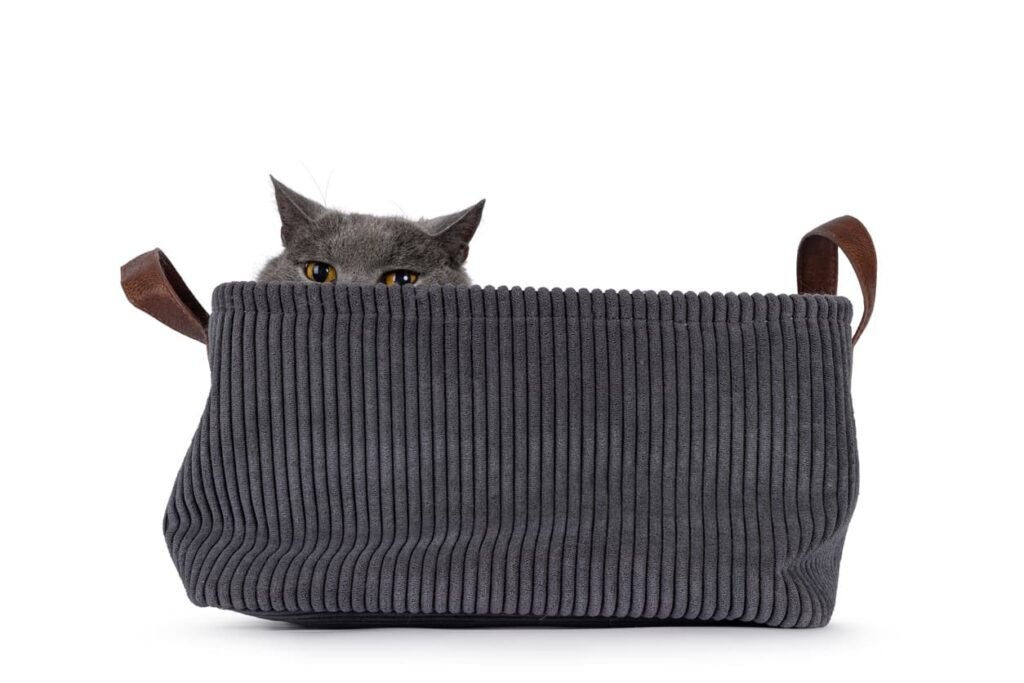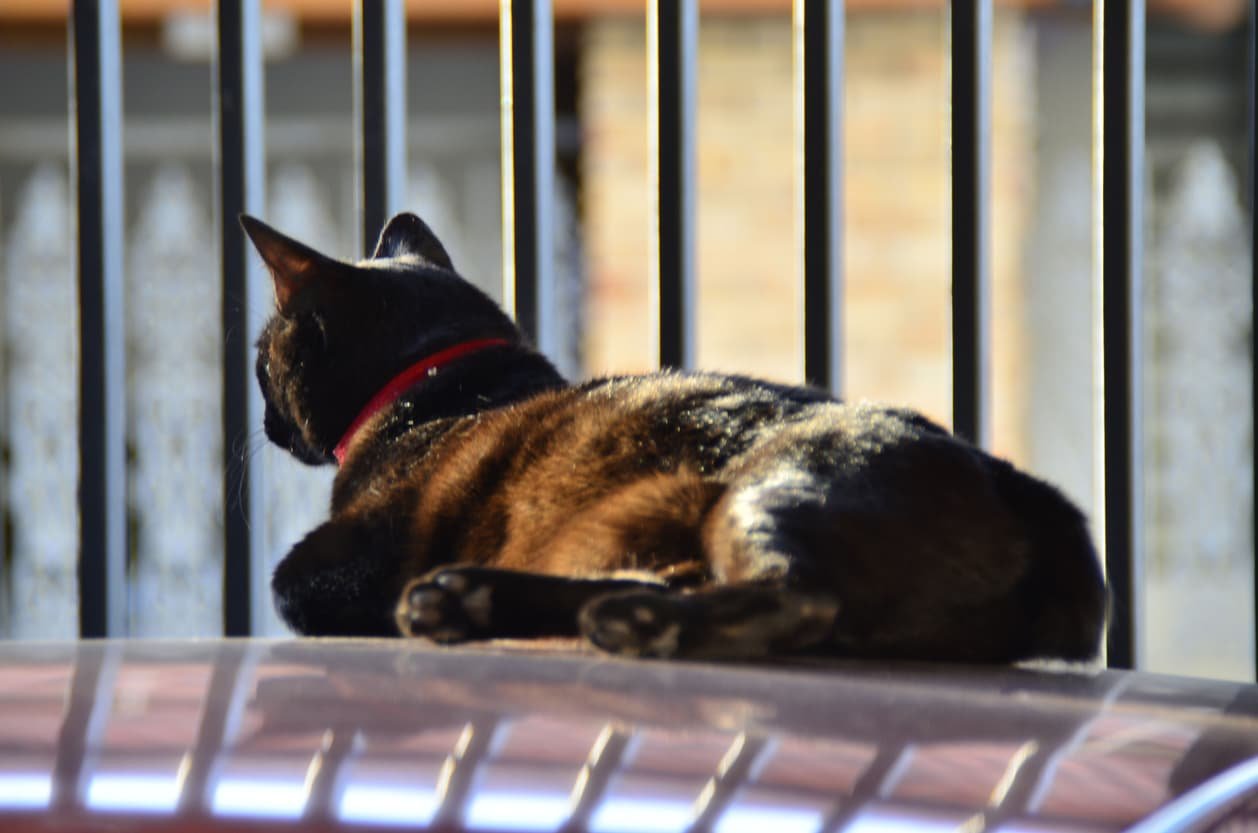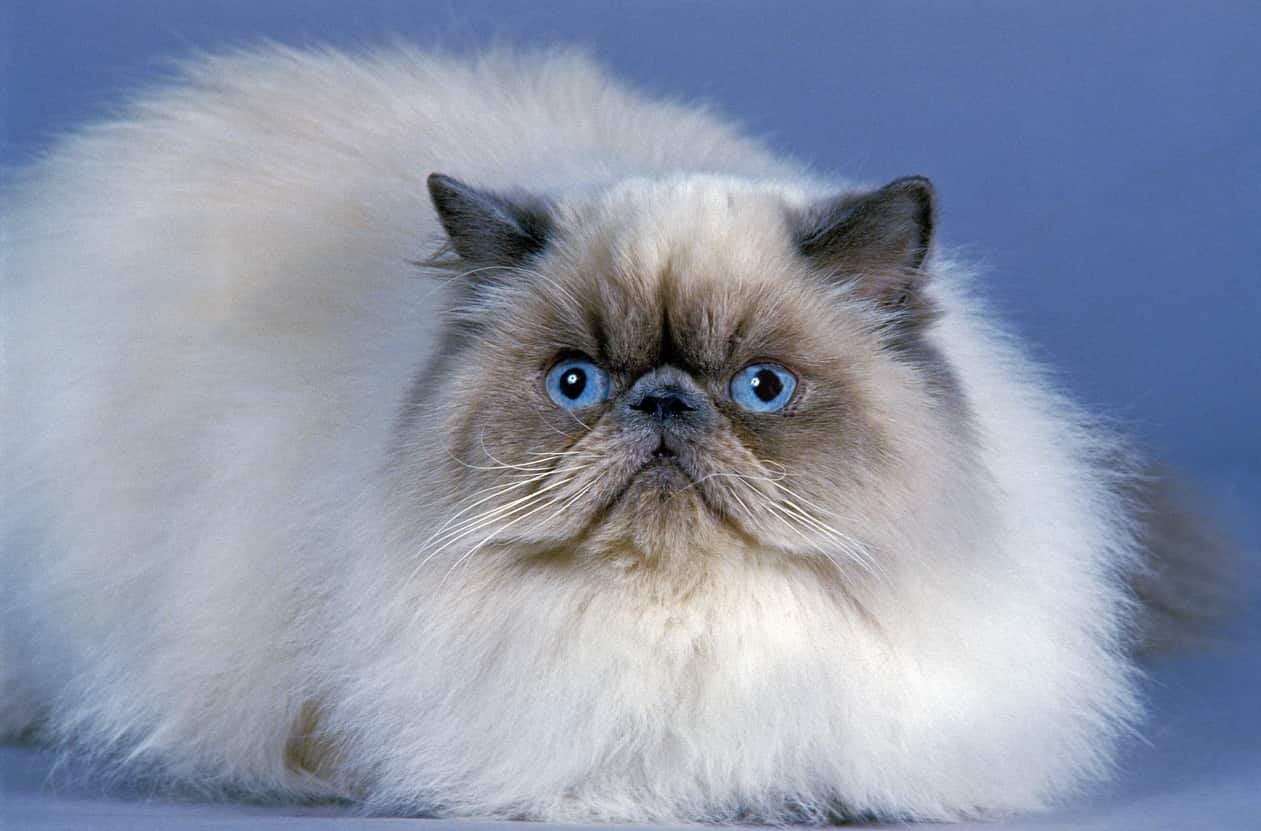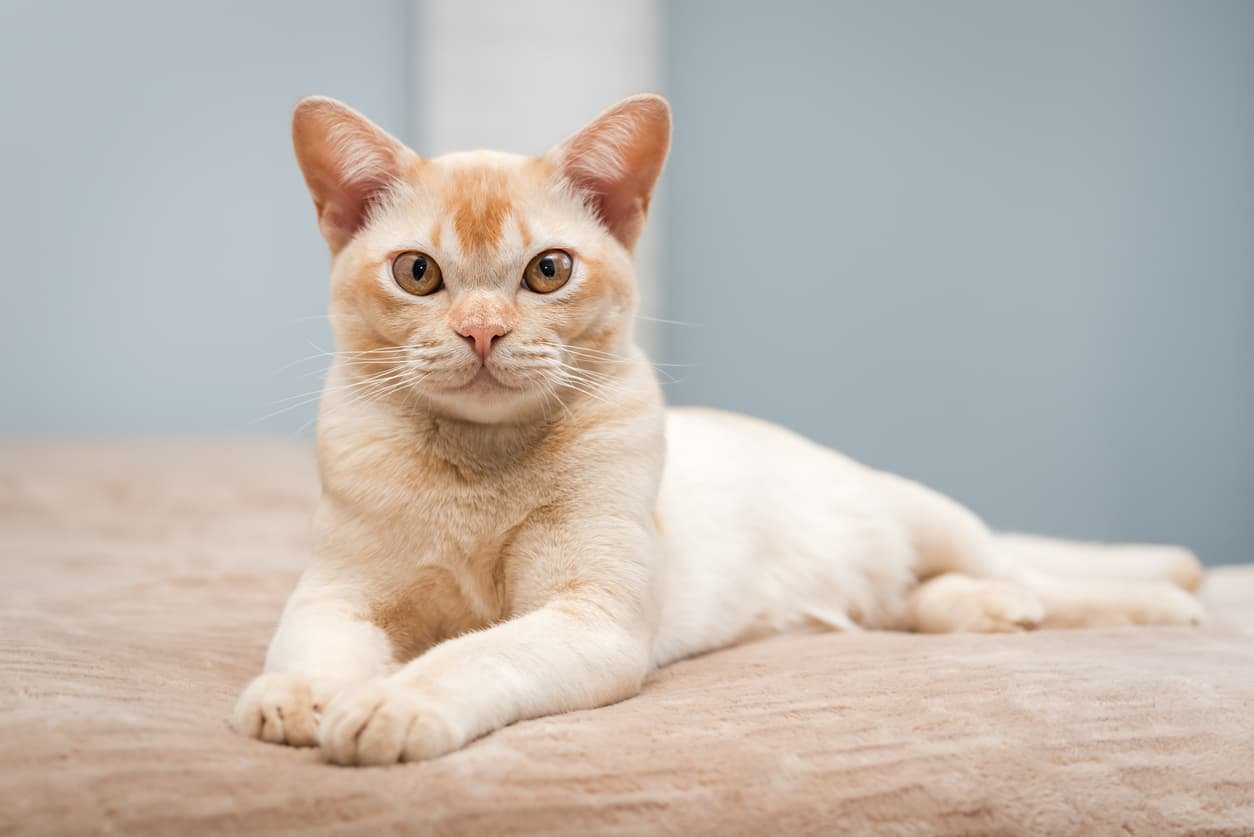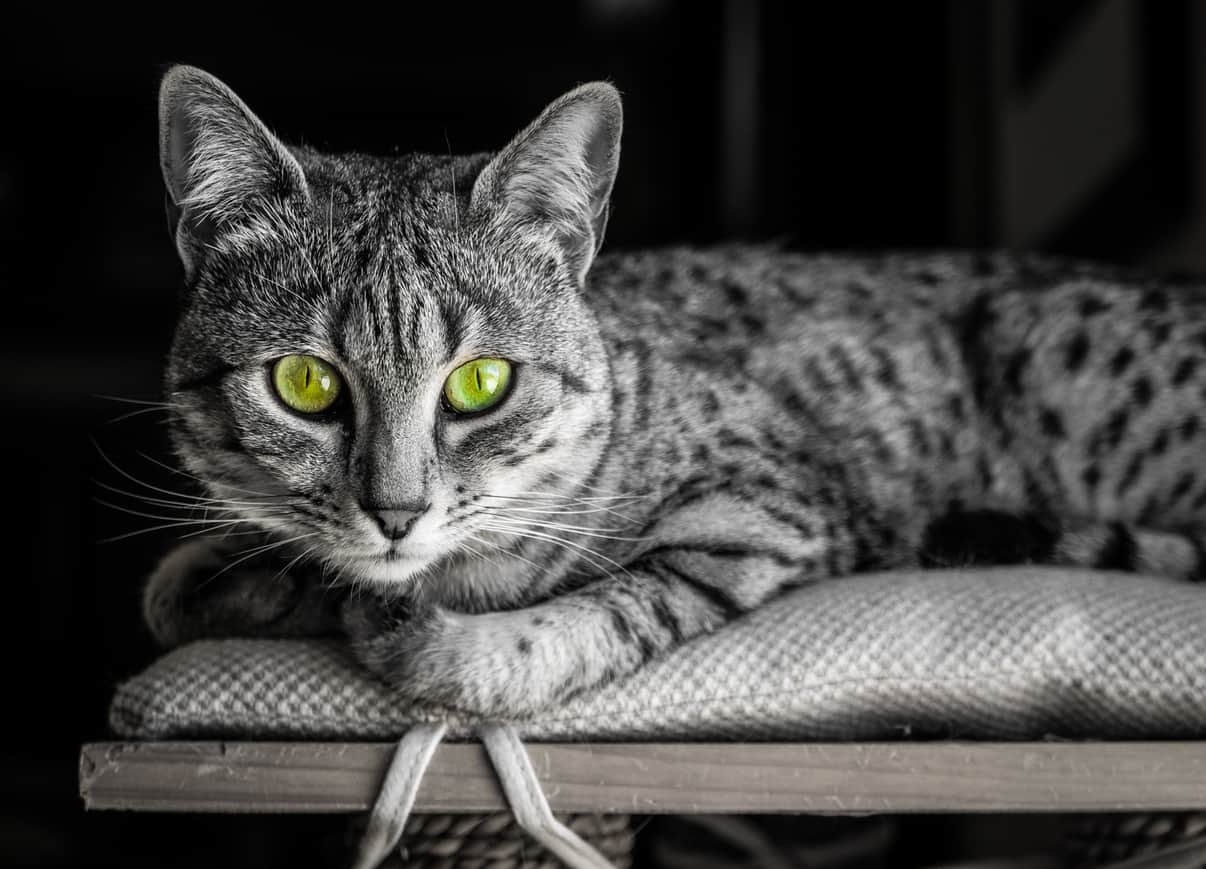The Chartreux cat is a rare and beloved breed known for its striking blue-gray coat, intelligent nature, and affectionate temperament. Whether you’re considering adopting one or simply intrigued by this charming feline, this guide will provide all the essential details about the Chartreux cat personality, history, grooming needs, diet, and more.
Table of Contents
ToggleChartreux Cat Breed Information Table
| Feature | Description |
|---|---|
| Breed Origin | Originated in France; believed to date back to medieval times, possibly bred by monks for pest control |
| Size | Medium to large-sized, muscular, and well-proportioned |
| Weight | Males: 10-16 lbs, Females: 7-11 lbs |
| Lifespan | 12-15 years, with some living beyond 15 years with proper care |
| Coat Type | Short, dense, and woolly; water-resistant double coat |
| Coat Colors | Always blue-gray, ranging from light to dark shades |
| Eye Color | Copper, gold, or orange, providing a striking contrast to the blue-gray coat |
| Temperament | Affectionate, intelligent, quiet, and playful; known for their dog-like loyalty to owners |
| Grooming Needs | Low maintenance; weekly brushing recommended to remove loose hair |
| Activity Level | Moderate; enjoys interactive play, climbing, and hunting-style games |
| Health Concerns | Prone to patellar luxation, hip dysplasia, and some genetic heart conditions |
| Best For | Families, singles, and those looking for a quiet yet affectionate companion with minimal grooming needs |
Chartreux Cat History
The Chartreux boasts a fascinating history that dates back centuries. Originating in France, these cats were first documented in the 16th century and were believed to have been bred by Carthusian monks for their quiet, mouse-catching abilities. Their luxurious coats and friendly nature made them highly sought after by French aristocrats and even referenced in literary works. Unfortunately, their population declined during World War II, but dedicated breeders worked to revive the breed, ensuring its continued existence today.
Chartreux Cat Personality
Chartreux cats are often described as affectionate yet independent. They form strong bonds with their owners but do not demand constant attention. Unlike some breeds that meow excessively, Chartreuxs are known for their soft, almost chirp-like voices. Their gentle nature makes them excellent companions for families, singles, and even seniors.
Chartreux Cat Characteristics
Physically, Chartreux cats are stunning. Their medium-to-large muscular bodies, rounded faces, and large golden or copper-colored eyes make them instantly recognizable. Their dense, water-repellent double coat gives them a plush, velvety appearance. They are also known for their signature “smile,” created by the unique shape of their muzzle.
Chartreux Cat Intelligence
Highly intelligent and quick learners, Chartreuxs are problem-solvers that enjoy interactive toys and puzzles. They can even be taught tricks or to fetch small objects. Their intelligence also makes them excellent at adapting to different living situations, making them a great choice for apartment dwellers.
Chartreux Cat Temperament
Despite their independent streak, Chartreuxs are deeply loyal to their owners. They are not overly vocal but will follow their humans around the house, observing everything with a keen eye. Their calm demeanor makes them well-suited for multi-pet households, as they generally get along with other cats and even dogs.
Chartreux Cat Fun Facts
- They are sometimes called “the smiling blue cat of France” due to their distinctive facial structure.
- Unlike most cats, Chartreux kittens are born with a light gray coat that darkens as they mature.
- They are known for their hunting skills and were historically used in monasteries to control rodent populations.
- Chartreuxs can be trained to walk on a leash, thanks to their intelligent and adaptable nature.
- They have a dog-like tendency to follow their owners from room to room.
Are Chartreux Cats Hypoallergenic?
While no cat is truly hypoallergenic, the Chartreux cat produces less of the allergenic protein Fel d 1 compared to other breeds. This means they may be a better option for allergy sufferers, but individual reactions will vary. Regular grooming and maintaining a clean home can help reduce allergens.
Chartreux Cat Grooming Tips
Despite their thick coats, Chartreuxs are relatively low-maintenance when it comes to grooming. Their fur does not mat easily, but weekly brushing helps remove loose hairs and reduces shedding. Bathing is rarely necessary, as their coats naturally repel dirt. Routine ear cleaning, nail trimming, and dental care will keep them in top shape.
Chartreux Cat Diet
A balanced diet is essential for a Chartreux’s overall health. High-protein, grain-free wet or dry food is recommended to maintain their muscular build. Fresh water should always be available, and occasional treats can be given in moderation. Avoid overfeeding, as this breed has a tendency to gain weight.
Chartreux Cat Exercise Needs
Although they enjoy lounging, Chartreuxs require regular physical activity to stay fit. Interactive toys, climbing structures, and daily playtime are essential. A cat tunnel bed can provide an excellent way to stimulate their natural hunting instincts and keep them engaged.
Chartreux Cat Training
Chartreuxs respond well to positive reinforcement training. They can learn basic commands, use a scratching post, and even play fetch. Clicker training works well with this breed, as they are food-motivated and eager to please.
Chartreux Cat Health Issues
This breed is generally healthy, but like all purebred cats, they are prone to certain genetic conditions. The most common concerns include:
- Hip dysplasia – A hereditary condition that can lead to arthritis.
- Patellar luxation – A knee joint issue that may require medical intervention.
- Polycystic kidney disease (PKD) – Though rare, it can occur in some Chartreux lines.
Regular veterinary check-ups, a nutritious diet, and exercise can help prevent many of these health issues.
How Long Do Chartreux Cats Live?
With proper care, Chartreuxs have an impressive lifespan of 12 to 16 years, with some living even longer. Providing a stress-free environment, regular vet visits, and high-quality food can significantly contribute to their longevity.
Chartreux Cat Sleeping Habits
Chartreuxs are known for their love of sleep, often resting up to 15 hours a day. They enjoy curling up in cozy spots, making a cat tunnel bed an ideal sleeping space. Their preference for warmth means they often snuggle under blankets or sleep near their owners.
FAQ
How can I tell if my cat is a Chartreux?
You might have a Chartreux if your cat has a blue-gray, woolly coat, copper to gold eyes, a muscular build, and a quiet, gentle personality. They’re known for smiling expressions. A vet or genetic test can help confirm the breed.
Why is the Chartreux cat rare?
The Chartreux cat is rare due to its limited breeding population and careful preservation by breeders. Originating in France, this ancient breed was nearly lost during wars and has since been selectively bred, keeping its numbers relatively low worldwide.
Do Chartreux cats meow a lot?
No, Chartreux cats are typically quiet and reserved. They rarely meow and often communicate through soft chirps, purrs, or body language—making them ideal for owners who prefer a calm, gentle companion.
Are Chartreux cats aggressive?
No, Chartreux cats are not aggressive. They’re known for their calm, gentle, and affectionate nature. They typically get along well with children, other pets, and enjoy quiet companionship without showing hostility.
Is my cat a Russian blue or a Chartreux?
Russian Blues have emerald-green eyes, sleek silver-blue coats, and a slender build. Chartreux cats have copper/gold eyes, a denser blue-gray coat, and a stocky, muscular body. Check for these traits or consult a vet for DNA testing.
How long do Chartreux cats live?
Chartreux cats typically live 12–15 years, with some reaching 20+ years with proper care. Ensure regular vet checkups, a high-protein diet, and indoor living to maximize lifespan.
Are Chartreux cats hypoallergenic?
No cat is 100% hypoallergenic, but Chartreux produce less Fel d 1 protein (the allergen) than many breeds. Their dense, woolly coat also traps dander, potentially reducing reactions.
Why do Chartreux cats smile?
Chartreux often appear to "smile" due to their rounded muzzle shape and gentle facial structure. This natural trait, combined with their calm demeanor, creates a happy expression.

